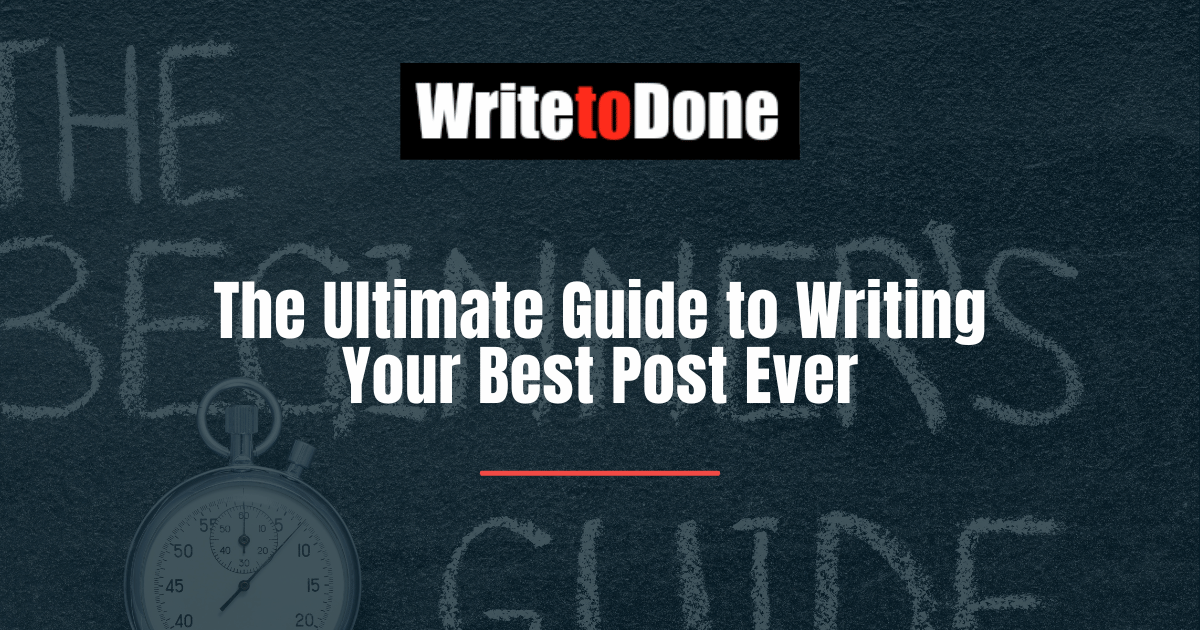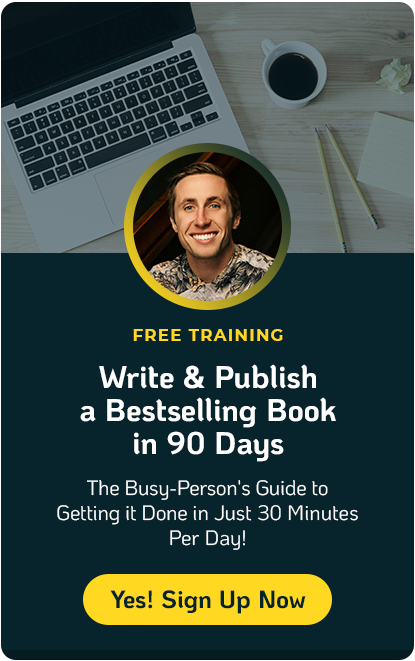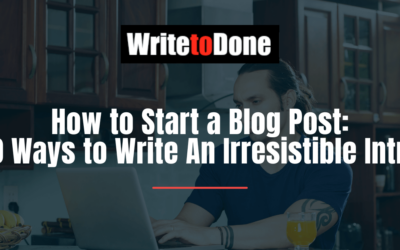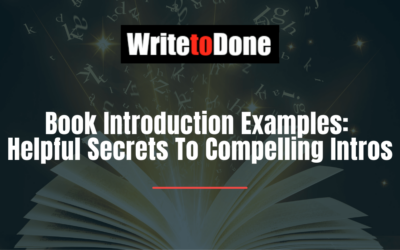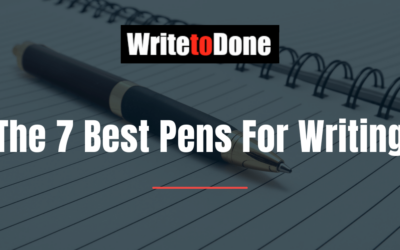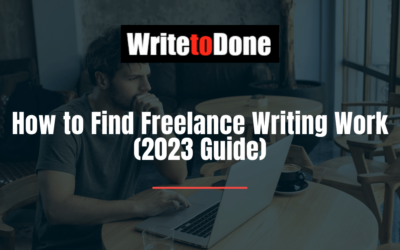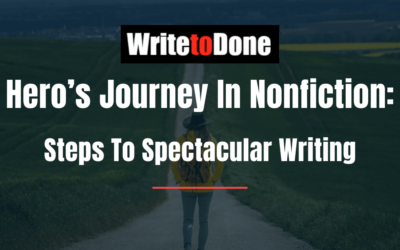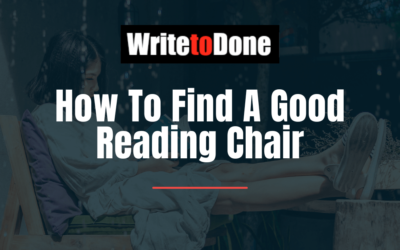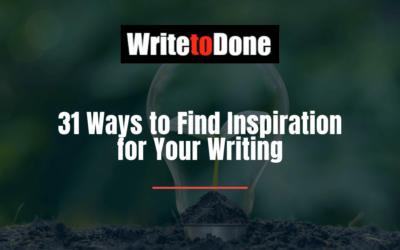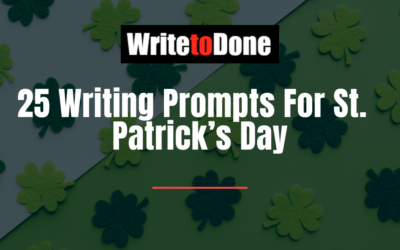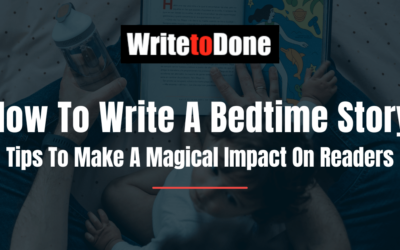Do you want to write your best post ever?
Then let’s dive straight in…
Part 1: Planning
Planning is about deciding what you want to say in your post.
Whether you blog to amuse, inform, entertain or share your thoughts, you want your readers to understand what you’re saying.
The thing is: if you were actually saying it, it would be much easier. Because your readers would have so many other cues to understand what you say:
- the tone, pitch and volume of your speech, and changes in these
- the changes in how fast or how slowly you say certain words or phrases
- the emotions that come through
But when you’re writing something, your readers don’t get the benefit of these cues. There’s not much point dashing off a well-written post when it doesn’t say anything meaningful.
Worse still, your well-written post might confuse your readers.
That is why it’s essential to plan before writing.
Why Planning is like an Onion
A good plan is like an onion.
First, there is the essence, the core message, which is like the innermost kernel of the onion.
Next you plan the details of the core message – how to do it, how many, how often, which way, what to do / not do. These are the layers that grow next to the innermost kernel.
Thirdly, you plan the introduction. You must plan a good opening as part of your introduction.
Then it’s time to plan the conclusion.
Last of all, you plan the title. Think of the title as the lovely onion skin you put on your post – the skin that says to the reader (buyer): “Pick me!”
Follow These Six Steps
A good plan has things written down in steps so we can follow the steps to reach our goal: to write the best post ever. The plan also helps keep us on track so we don’t lose the thread of what we want to say.
Grab a pen and paper, or have your computer primed for when you begin planning your best post ever.
[thrive_text_block color=”blue” headline=””]Want To Grow Your Blog From $0 To $1000 Per Month? Yes! Show Me How! [/thrive_text_block]
Step 1: Start at the heart of the matter.
The first thing to plan is: what your post will be about? What is the one, all-important message you want to convey to your reader?
Try and write it out in one sentence.
For instance, you might want to write a post about what people should do to have a healthy life. But there is a long list of things that people need to do (and not do!) to be healthy.
You might want to make it easy for them by shortening this list to just 5 things they need to do. 5 things is simple, 5 things sounds doable, and with just 5 things, it’s likely people will read your post and give your ideas a try.
You decide the core message of your post: by doing just these 5 things, people can lead a healthy life.
Step 2: Plan the middle.
The middle of your post is what you want to say in your message.
This is the time to explain your message. Talk about it a bit. Build your heart-of-the-matter one sentence into a paragraph. Or two. Or three.
In our example, the middle is the 5 things that people could do to be healthy.
Which 5 things will you choose? You have many options: exercise, nutrition, sleep, work, meditation, relationships, medication, relaxation and so on.
Let’s say you decide on these 5: Nutrition, exercise, sleep, work, relaxation.
Write one sentence each for them. You might come up with something like this:
- Nutrition: food and water.
- Exercise: workouts, sports, adding physical activity to the day.
- Sleep: quantity and quality.
- Work: something that makes a person put in effort and gives them a feeling of accomplishment at the end of the day.
- Relaxation: something that gives a person joy; something they find fulfilling.
You have now planned the middle of your post.
Step 3: Plan the introduction.
You’re reading this right!
First you plan the middle. Then you plan the introduction.
It sounds back-to-front, but if you plan this way, when you get down to writing the post, you will have no trouble (and neither will your readers) with the flow of the post. Each thought will lead seamlessly to the next one, making it a smooth read that requires minimal effort from your readers.
You know the essence, the core of your post.
When you plan the introduction to your post, ask the question: Why is my core message important for my readers?
Your introduction has to give your readers a reason to care enough to read on to the middle of your post.
To continue with our example, you need to think about why readers would want to know about 5 things they could do to be healthy.
A few minutes’ thought will give you several reasons why they would care to know this information.
- Health is important – without it, it is impossible to be happy, enjoy relationships, do meaningful work and so on.
- Today, serious diseases are striking silently. They are doing so earlier than ever before. 30-year-olds are getting fatal heart attacks. Teenagers are suffering from obesity, adult diabetes etc.
- There is too much information about how to be healthy. A lot of it is complicated and confusing. Some of it is contradictory. It is difficult to keep track of so many things while managing the rest of one’s life.
You might come up with more reasons. List them all in your plan for the introduction.
Step 4: Plan the opening.
The opening sentence of your post is like clearing your throat in a crowded gathering to get people’s attention.
- It has to be powerful enough to make people stop their conversations and pay attention to you, and
- What you say has to be compelling enough to make people want to hear more.
The opening sentence of your best post ever also needs to do these 2 things: you need to grab people’s attention and make them want to read on.
There are many ways to do this. Some of them are listed below:
- Ask a question your readers want an answer to, like in How to Write Better – 7 Instant Fixes.
- Intrigue the reader, like in 201 Ways to Arouse Your Creativity.
- Make a provocative statement, like in How Fear Helps You to Write Better.
- Use an interesting quote, like in Develop Your Narrative Voice by Stealing from Bestselling Authors.
- Make a statement that your readers feel exactly describes their situation, like in Be a Successful Author – 3 Book Marketing Strategies that Actually Work.
- Have a surprise twist, like in How to Win More Readers with a Powerful Close.
For our post, let’s say you want the opening sentence to be provocative. Something like: leading a healthy life takes so much time and energy, that I simply can’t afford it.
Note that this is not the opening sentence itself, but the plan for an opening sentence.
Step 5: Plan the Conclusion.
The place that your post stops is its end, so every post will have an end.
But if you want to write the best post ever, what you need is a conclusion. A good conclusion leaves the reader with a feeling of satisfaction. Just like when you’ve been told a good joke and you have a hearty laugh. You’ve laughed as much as you wanted to, and no more.
A wonderful way to plan the conclusion is to look at the core message of your post and ask the question: So what?
Write your answer to this question in one sentence or in a few points. You have now planned your conclusion.
To continue our example: Doing only 5 things can help people be healthy. So what?
Answer: So being healthy, which was difficult earlier, is now a practical option for many people.
Step 6: Plan the title.
You have planned your entire post. All you need to plan now is the title.
Unless you are struck by a particular phrase or title, simply jot down words that seem to encompass the core message of your post.
The example gives us: 5 ways, healthy, easy, practical.
By following these six steps in order, you will have a plan for your best post ever. In fact, if you’ve put in all the work, you’re already one-third of the way there.
Of course you still need to write the post and to check it, but that comes later. Right now, it’s time to celebrate your accomplishment!
Part 2: Writing
To write your best post ever, you need to think of who you are writing for.
There is good writing and bad writing. But sometimes, writing is neither good nor bad. It is just ‘wrong writing’ – it is wrong for the audience reading it.
The core message of part one: planning was: by taking care of just 5 things (nutrition, exercise, sleep, work and relaxation), people can lead a healthy life.
If you think about it for a minute, you can write so many different posts with the plan you created:
- 1 for teenagers
- 1 for busy professionals over 40
- 1 for retirees
- 1 for mothers of newborn babies
- 1 for diabetics
- 1 for fitness enthusiasts
And so on.
Focus on: What Will Make Your Audience Care?
You could cry yourself hoarse saying that just taking care of nutrition, exercise, sleep, work and relaxation will help your readers to lead a healthy life, but would that make them believe you?
Probably not.
You need to show your readers how doing these 5 things will help them be healthy. You need to emphasize how they will benefit by following your suggestions.
- Will it keep their weight down, reduce acne, and help them grow taller / stronger? Teenagers would respond well to this.
- Will it give them more energy, make them more productive, and help reduce the niggling aches and pains they get from stress? Busy professionals will grasp this gratefully.
- Will it help them delay the onset of dementia, Alzheimer’s, arthritis and so on? Retirees want to read this.
- Will it regulate their wildly fluctuating hormones and help them feel more in control of every area of their lives? Moms of newborns are desperate for this information.
- Will it help them to live a full, productive life as they manage their disease? That’s what diabetics are looking for.
- Will this reduce injuries from over-exercising and prevent nutritional deficiencies which will impact overall health and fitness? Fitness enthusiasts can suffer from a blind spot. Because they work out and eat healthy, they may not realize the importance of adequate sleep, doing enjoyable work or relaxing enough.
As you can see, the word ‘healthy’ means different things to different people. Your audience’s definition of ‘healthy’ depends upon its interests and the peculiar challenges it faces. That is why the first thing you need to know before you begin writing is: who is your audience.
You need to know your readers’ specific interests and the particular problems they face. People care about their problems. They care enough to look for solutions to their problems.
If your post can offer your readers the solutions and benefits that they are looking for, you will be able to make your audience care about what you are saying in your post.
Only when you give your audience a reason to care will they reward you by reading your post.
How Your Audience Affects Your Writing
As you begin to write the post you planned, consider who you are writing for. This will decide:
1. Your language – will you use jargon, technical language? Will you use slang? Will you use some words and avoid others?
If you’re writing for fitness enthusiasts, you would use the term BMR (Basal Metabolic Rate) with at most a passing reference to what it means; your audience are fitness enthusiasts, and BMR is one of the most basic ways to measure fitness, so this is a term you would expect them to know. This post will be peppered with the jargon of fitness.
If you’re writing for teenagers, on the other hand, you might need to explain the term thoroughly, since they would probably not be familiar with it. Here, you’d definitely want to use words like ‘hip’, ‘cool’ and so on.
2. Your sentences – will they be long and complicated, or short and simple? Or will they fall somewhere in between?
Professionals are most likely to keep reading when your sentences are relatively long. They are used to ‘long and complicated’. But they might not want to read long and complicated writing outside of their area of expertise!
The mother of a newborn has little time. She is more likely to read your post if you keep it short and snappy.
3. Your tone – will you be snarky, cool, professional, caring, calm, zany? Will you have an attitude? Will you be correct and formal?
Snarky and zany are not likely to work with retirees. Instead, they will respond to caring, calm and professional. Retirees have as great a sense of fun as any other group, but fun alone will not cut it with them if you’re trying to get across the message that just by doing these 5 things, they can enjoy good health.
Professional is good for diabetics too. They need to feel that you know what you are talking about for them to read your post (and, hopefully, follow your suggestions).
4. The examples and metaphors you use – different audiences will respond differently to the same example.
Suppose you were to write:
“If you’re getting enough exercise, eating right, sleeping enough, and enjoying your work, that’s great, but there’s one more thing that you need to do to be truly healthy.
You need to relax. It is relaxation – doing things you enjoy and doing them without any stress – that refreshes you. It gives you the downtime you need to live the rest of your life enthusiastically.
Relaxation may be a head massage, a funny movie, a roller-coaster ride, checking out Facebook, hanging out at the mall, or anything you want it to be.”
Uh-oh! This example just ruined it all.
The first two paragraphs show clearly that this post is not meant for teenagers. And of all the audiences listed above, only teenagers and retirees are likely to consider hanging out at the mall a form of relaxation.
But even if this post is meant for retirees, the example fails. Not too many retirees would consider a roller-coaster ride to be a form of relaxation.
So give examples, share anecdotes and tell stories. But only if they are relevant to your audience.
As you vary your language, your sentences, your tone and the examples you use, you will come up with a new post for each of the above groups of people, and for many others as well.
Writing your best post ever is about writing for your audience.
Follow These Seven Steps
Step 1: Re-organize your plan and read it.
You did a great job planning your post!
Now put everything in the correct order:
- Opening
- Introduction
- Middle
- Conclusion
(Leave the Title aside for the moment.)
Read through your organized plan a couple of times. This will get you in tune with the flow of your post, and will help you focus on what you want to say.
Now you’re ready to write.
Step 2: Write the opening, introduction, middle, conclusion – in that order.
Keeping in mind your audience and what will make them care, write your opening and introduction.
Normally, there is a pause in your writing because you don’t know what to write next. But you have planned your post, so you know exactly what comes next.
So write in full flow.
- Don’t worry about grammatical errors, incorrect sentence construction or anything to do with the quality of your writing.
- If you’re writing but begin to wonder if your information is correct, put that thought in brackets. For example: “Research (quote source) reveals that after age 30, for every week in which you’ve exercised less than 3 hours, you shorten your lifespan by 25 minutes (check – is this for every week / is it 25 mins?).”
- If a metaphor or story comes to mind as you write, write it in.
- If you haven’t come up with a specific example but feel the need for one, just use a placeholder.
- If you want to prove a point by quoting an authority or using data, use a placeholder.
- If you’d like to offer your readers additional information by linking to another site or post, and you know the site you want to link to, write it into the text in brackets.
- If you don’t know the site you want to link to, use a placeholder to help you remember to do so later.
- If you’re unsure about paragraphs, write in one large block of text. You can always create the paragraphs later.
- What if you are unable to write the entire post in one go? It’s a good idea to read through your plan a couple of times, then read what you’ve written earlier and only then carry on writing from where you left off. If you manage to finish the post this time around, great! If not, rinse and repeat this step till you’re done writing.
Write in full flow.
Step 3: Fill in the placeholders.
Locate and fill in the correct quotes and data.
Write in the appropriate examples.
Identify the correct URLs to use when providing links.
Step 4: Read what you’ve written, then rewrite.
As you read your post, you’ll find a few things you might want to change, correct, say differently, or not say at all. You may even get new ideas.
This is also the time to organize your paragraphs. A good rule of thumb is that each idea deserves its own paragraph.
Rewrite the post till you are satisfied with it.
Step 5: Step away.
Give yourself (and your post) a cooling-off period. At least 24 hours would be ideal.
Step 6: Reread the post and make changes.
Now that you’ve got some distance between yourself and the post, you will be able to read it with relatively fresh eyes and a relatively fresh mind.
Inconsistencies in ideas, metaphors and sentences will be easier to identify. Fix everything.
And you’re done writing!
All that remains is for you to…
Step 7: Create a title.
You’ve got your post into shape, and you have a plan for the title.
At Write to Done, we’ve featured some awesome posts on creating titles (and this post is already very long), so I’ll just add a few links that will help you create a title that will drive readers to your post. Here they are:
- The Art (and Science) Behind Neck-Snapping Headlines
- Do Long or Short Headlines Work Better?
- The Headline Breath Test
- The Magic of Double Whammy Headlines – and How to Use Their Enormous Power
- How to Avoid Barriers That Weaken Your Headlines
- How a Few Measly Words Can Dramatically Improve Your Article Headlines
Remember, the title you create needs to appeal to your audience.
Create a few titles and finalize the best one.
Whew! You’re done writing the post. This is a tremendous achievement, given the time and effort you have lavished on it. But then you did want to write your best post ever, right?
Is it time to hit publish?
No. Not yet.
Let’s leave this wonderfully written post with the beautifully crafted title aside for a few days, before we come back to check it.
Part 3: Editing
Sometimes, people will read a post a number of times to ‘check’ it. This is good. If you allow long-enough breaks (at least 24 hours) between two subsequent ‘checkings’ you will probably spot a couple of mistakes you did not catch the last time you checked.
But there’s a better way to check your post. A more effective, more efficient way that will help you achieve your goal of writing your best post ever. Each time you check, check for one thing only.
Before you begin checking your post, read through your plan (Step 1 in How to Write Your Best Post Ever – Part 2: Writing).
Then, think for a few minutes about who you are writing for and what will make them care. Suppose you’re writing for busy professionals over 40. What will make them care is that being healthy will give them more energy, make them more productive, and help reduce the niggling aches and pains they get from stress.
Now that you’ve re-oriented yourself, you can start checking your post. Follow the steps below in order.
Remember, to edit your best post ever, each time you read your post, check for one thing only.
Follow These Six Steps
Step 1: Check for balance.
Are your introduction, middle and conclusion balanced? Typically, you’d want the introduction and conclusion to be no more than 10% each of your post, leaving 80% for the middle.
Have you given equal weight to the points in the middle? Nutrition, exercise, sleep, work and relaxation must all be explained in relatively equal depth in your post. If, when talking about sleep as an essential element of good health, you quote an example of how someone functioned so much better with 7 hours or more of sleep than with less, have you quoted examples or research or case studies in each of the other elements of good health as well?
Step 2: Check your paragraphs.
Read what you’ve written. Every time you see a new idea, make that the beginning of a new paragraph. Examples and anecdotes can be in the same paragraph or in a new one.
If you find that a paragraph is too long, see where you can break it up to create two or more paragraphs.
Vary the length of your paragraphs to prevent visual and mental monotony.
Step 3: Check your voice.
Is your voice appropriate for:
The topic?
Your audience?
Your style?
For instance, when you talk about nutrition, you might say:
“Nuts are an important source of healthy fats. They contain trace quantities of minerals that are vital for proper body functioning and which are better absorbed when they are ingested as food rather than as food supplement pills.
It pays to be nuts about nuts, eh?”
This last sentence is your voice making itself heard. Whether it works or not depends on your topic, your audience and your style.
If the tone of your post is professional and caring (remember, you’re writing for busy professionals over 40), the sentence sounds awkward. It sounds forced and false, and the post is probably better off without it.
If your audience hears you saying the words, it might not sound so bad. Because some things sound nicer when said than read. But in writing? You might not be able to carry it off.
Consider that you might have written your post while in some zany mood, but once the mood passes, you will cringe at having included this sentence.
The written word leaves a mark, so you want to be as sure as you can be that it’s a mark you can live with once your mood has passed.
But sometimes your voice can help you connect with your audience. You might write:
“If you don’t already eat nuts regularly, adding them to your diet can seem like too much trouble, but it doesn’t have to be so. It can be as easy as adding nuts to your grocery shopping list. Once you buy the nuts, you can add them to recipes or eat a few as a snack. It’s as simple as that!”
Here, your voice comes through clearly in the first sentence. But this is a friendly, I-understand-your-situation, you-can-do-it voice. This is a wonderful voice, and readers feel connected to you. They want to ‘hear’ more of you.
Be conscious of your voice, and tone it down or turn it up, depending on what you think your audience needs to stay connected.
Step 4: Read your post aloud.
Read your post aloud. Nice and slow and clear. And loud. (Yes, I’ve said that twice now.)
Mark everything that sounds wrong. Mark everything that reads wrong.
After you’ve read the entire post, fix everything you marked.
Step 5: Rest.
By now, you’ve accomplished a lot of work. It’s time to rest.
Please rest for at least 24 hours. Don’t read the post – even for pleasure!
Step 6: Check your GPS.
Use your GPS to ensure you’re headed in the right direction.
Since G, P and S stand for different things, you’ll be performing this step 3 times – once for G, the second time for P, and finally, for S.
G = Grammar and Usage
Here are some of the elements of grammar you’d want to check.
1. Are your sentences grammatically correct?
Maybe you changed the sentence: “Dr. XYZ says…” to “Experts at the American Medical Board …”, but missed changing “says” to “say”.
2. Are parts of the sentence correctly placed?
When talking about sleep: “He slept at midnight in Paris.”
There’s something not quite right about it. It would be much better (and clearer) to say: “In Paris, he slept at midnight.”
3. Have you mixed your tenses?
“Most people feel they don’t sleep enough, but decide they will sleep more.” Ouch! The present tense has morphed into the future tense, and this sentence reads strangely.
Here’s the correct sentence: “Most people feel they don’t sleep enough, but would like to sleep more.”
4. Are your prepositions in the right place?
Prepositions describe the relationship of a noun to another word in the sentence.
“Eat at the table”: this says eat with your food on the table.
“Eat on the table”: this says eat while you are sitting on the table.
Two completely different meanings, you’ll agree.
5. Are you using too many adjectives?
Adjectives describe nouns: “The rejuvenating, revitalizing, immunity-boosting qualities of restful sleep…”
Adjectives are like make-up. A little, used judiciously, is good. Too much has the opposite of the effect you are aiming for.
Using too many adjectives is a sign of lazy writing. Your writing should be able to make its point without leaning on adjectives.
6. What about adverbs?
Adverbs describe verbs: “Eating quickly is harmful for many reasons.”
Adverbs are also a form of lazy writing. Try to look for more powerful verbs instead. “Gulping down your food is harmful for many reasons.”
7. Check your usage.
Many things sound alright when said: “Jumping off of a cliff while tied to a rope may not be everyone’s idea of relaxation.”
But that is verbal.
When writing, you might want to change it to the more universally accepted form: “Jumping off a cliff while tied to a rope may not be everyone’s idea of relaxation.”
8. Watch out for common culprits: very, really, and, well – and whatever else is personal to you.
If it’s “very important” that you “really like” “X and Y and Z” and “well, A and B as well”, your reader will find it difficult to get your message. These words are so over-used that they have almost lost their ability to add impact.
Everyone has favorite words or phrases. Do you start many sentences with “so”? Do you use the word “just” or “only” quite often? If yes, your post will benefit from removing these words.
P = Punctuation
Does each sentence end with a full stop, question mark or exclamation mark?
Does each sentence begin with a capital letter?
Are quote marks correctly placed?
Is there one space between words and after each punctuation mark?
Should a comma be replaced by a semi-colon or a colon?
S = Spelling
When you write for your audience, the decision of which spelling convention you will use is already made. Broadly speaking, you could choose British or American spelling. If you use British English, for instance, you will spell ‘colour’ and ‘realise’. American spelling, on the other hand, will give you ‘color’ and ‘realize’.
Beyond this, there is almost infinite variety. You might use Australian English or Singaporean English or Indian English or Mexican English or …
Spell check won’t help you if you want to talk about ‘lead poisoning’ but write ‘led poisoning’ instead. You need to check your spelling consciously.
You also need to check if you have spelt the names of people and places correctly (if you’re using them).
The list above is an indication of elements you need to check. There is an ocean of detail I haven’t gone into. You can also find useful information by clicking on the links below:
Eight Simple Tips for Editing Your Own Work
Get Your Eagle Eye On: 10 Tips for Proofreading Your Own Work
Warning: Your Grammar Mistakes are Killing Your Traffic
The Ultimate 15-point Checklist to Make Your Writing Come Alive
How to Edit in 5 Easy Steps
You have finished editing your post! Your GPS has brought you to the end of your journey. But before you get off the road, you need to see whether you’ve done 3 things:
Did you read your plan?
Did you keep your audience in mind, focusing on what would make them care?
Did you follow these six steps in order, checking each time for only one thing?
If not, please go back and do this. You are so close to the finish line – to writing your best post ever. It would be a shame to sabotage your post after having put in so much work.
To understand how important this is, imagine if I were to begin checking the grammar, then punctuation and then spelling for this paragraph. I might end up with a paragraph like this:
“Good health is very (good catch) essential if we want to lead a full life (missed this one – there should be no space between the word and the full stop). There are many ways you will (missed this one!) can be helthy healthy.
When doing brain work, it is best to concentrate on one thing at a time. And planning, writing and editing your best post ever definitely counts as brain work.
To edit effectively, each time you read your post, check for one thing only.
And with that, you’re done editing your post!
Let’s pause for a moment and take a deep breath. Your GPS has brought you to your destination.
You’ve just written your best post ever. Congratulations!
It’s probably been a lot more work than you bargained for when you set out to write your best post ever:
Planning each element of your post.
Writing, keeping in mind your audience and what would make them care.
Editing, reading your post over and over again, checking each time for one thing only.
All that remains is to press “Publish”. You can do so confidently. You’ve given this post everything you have. And it will repay you a thousand times over as your readers find value and connection with you.
Another thing: this is your best post ever – till now. Nothing prevents you from making the next one another ‘best post’.
The best thing about writing your best post ever is that as you keep repeating the process, it gets easier and takes less time. And you write a lot of best posts ever!
[thrive_text_block color=”blue” headline=””]Want To Grow Your Blog From $0 To $1000 Per Month? Yes! Show Me How! [/thrive_text_block]
What are your tips for writing your best post ever? let me know in the comments below.

